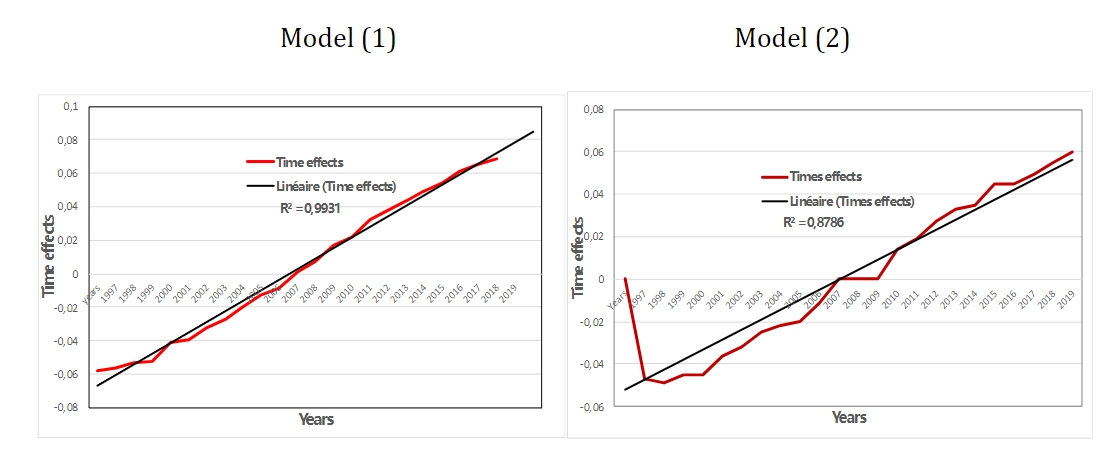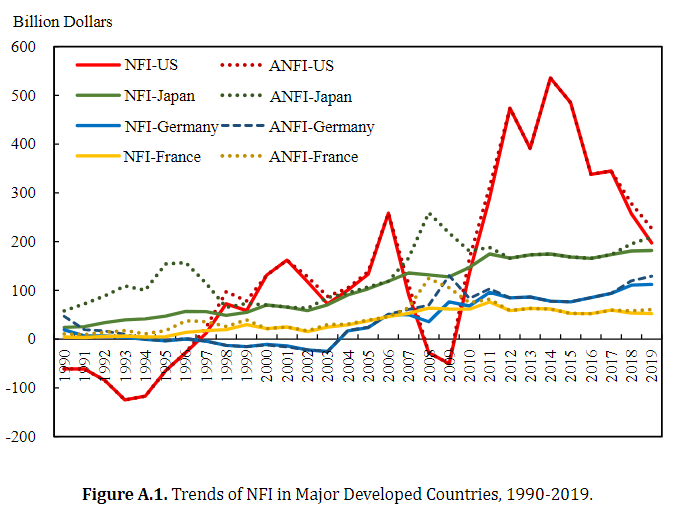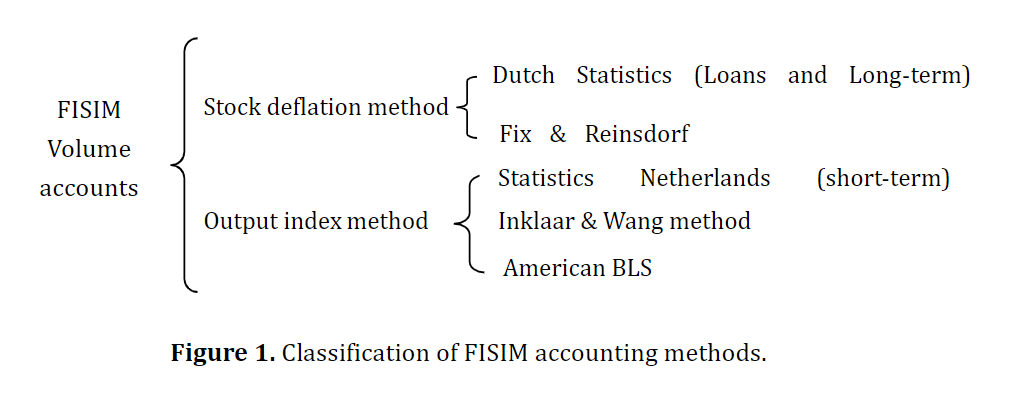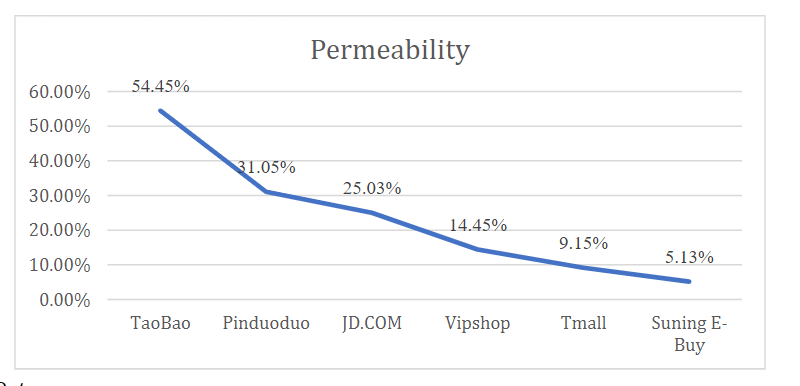Economic Growth and Carbon Emission Nexus: the Function of Tourism in Brazil
Abstract
The impact of international tourism on emerging markets has been overwhelmingly beneficial. Despite the obvious benefits of tourism, it comes at a high price for the environment in the form of pollution. Brazil's annual tourist influx has the potential to boost economic development and damage the country's ecosystems. The objective of this investigation is to analyze, using time series data ranging from 1990 to 2019, the effects of tourism and economic growth (GDP) on carbon dioxide (CO2) emissions in Brazil. The stationarity of the data was examined by employing unit root tests, and an autoregressive distributed lag (ARDL) technique was used to investigate the link between the factors, taking both the long- and the short-run into consideration. This research shows that there are long-term and short-term ties between Brazil's tourism industry, GDP, and CO2 emissions. Yet, both tourism and economic expansion have had serious negative effects on Brazil's ecology. These results indicate that in order to maintain environmental quality in Brazil, policymakers need to pursue more eco-friendly economic expansion as well as environmentally conscious tourist regulations.
Cite This Paper
Raihan, A. (2023). Economic Growth and Carbon Emission Nexus: the Function of Tourism in Brazil. Journal of Economic Statistics, 1(2), 12. doi:10.58567/jes01020005
Raihan, A. Economic Growth and Carbon Emission Nexus: the Function of Tourism in Brazil. Journal of Economic Statistics, 2023, 1, 12. doi:10.58567/jes01020005
Raihan A. Economic Growth and Carbon Emission Nexus: the Function of Tourism in Brazil. Journal of Economic Statistics; 2023, 1(2):12. doi:10.58567/jes01020005
Raihan, Asif 2023. "Economic Growth and Carbon Emission Nexus: the Function of Tourism in Brazil" Journal of Economic Statistics 1, no.2:12. doi:10.58567/jes01020005
Share and Cite
Article Metrics
References
- Ali, A. Z., Rahman, M. S., and Raihan, A. (2022). Soil Carbon Sequestration in Agroforestry Systems as a Mitigation Strategy of Climate Change: A Case Study from Dinajpur, Bangladesh. Advances in Environmental and Engineering Research 3(4), 1-15. http://dx.doi.org/10.21926/aeer.2204056
- Aziz, N., Mihardjo, L. W., Sharif, A., and Jermsittiparsert, K. (2020). The Role of Tourism and Renewable Energy in Testing the Environmental Kuznets Curve in the BRICS Countries: Fresh Evidence from Methods of Moments Quantile Regression. Environmental Science and Pollution Research 27 (31), 39427-39441. https://doi.org/10.1007/s11356-020-10011-y
- Begum, R. A., Raihan, A., and Said, M. N. M. (2020). Dynamic impacts of economic growth and forested area on carbon dioxide emissions in Malaysia. Sustainability 12(22), 9375. https://doi.org/10.3390/su12229375
- Blake, A., Sinclair, M. T., and Soria, J. A. C. (2006). Tourism Productivity: Evidence from the United Kingdom. Annals of Tourism Research 33 (4), 1099-1120. https://doi.org/10.1016/j.annals.2006.06.001
- Isfat, M., and Raihan, A. (2022). Current Practices, Challenges, and Future Directions of Climate Change Adaptation in Bangladesh. International Journal of Research Publication and Reviews 3(5), 3429-3437.
- Jaafar, W. S. W. M., Maulud, K. N. A., Kamarulzaman, A. M. M., Raihan, A., Sah, S. M., Ahmad, A., Saad, S. N. M., Azmi, A. T. M., Syukri, N. K. A. J., and Khan, W. R. (2020). The influence of forest degradation on land surface temperature–a case study of Perak and Kedah, Malaysia. Forests 11(6), 670. https://doi.org/10.3390/f11060670
- Koçak, E., Ulucak, R., and Ulucak, Z. Ş. (2020). The Impact of Tourism Developments on CO2 Emissions: An Advanced Panel Data Estimation. Tourism Management Perspectives 33, 100611. https://doi.org/10.1016/j.tmp.2019.100611
- Liu, A., Song, H., and Blake, A. (2018). Modelling Productivity Shocks and Economic Growth Using the Bayesian Dynamic Stochastic General Equilibrium Approach. International Journal of Contemporary Hospitality Management 30 (11), 3229-3249. https://doi.org/10.1108/ijchm-10-2017-0686
- Pesaran, M. H., Shin, Y., and Smith, R. J. (2001). Bounds testing approaches to the analysis of level relationships. Journal of applied econometrics 16(3), 289-326. https://doi.org/10.1002/jae.616
- Raihan, A. (2023a). Toward sustainable and green development in Chile: dynamic influences of carbon emission reduction variables. Innovation and Green Development 2, 100038. https://doi.org/10.1016/j.igd.2023.100038
- Raihan, A. (2023b). The dynamic nexus between economic growth, renewable energy use, urbanization, industrialization, tourism, agricultural productivity, forest area, and carbon dioxide emissions in the Philippines. Energy Nexus 9, 100180. https://doi.org/10.1016/j.nexus.2023.100180
- Raihan, A. (2023c). Exploring Environmental Kuznets Curve and Pollution Haven Hypothesis in Bangladesh: The Impact of Foreign Direct Investment. Journal of Environmental Science and Economics 2(1), 25-36. https://doi.org/10.56556/jescae.v2i1.451
- Raihan, A. (2023d). An econometric evaluation of the effects of economic growth, energy use, and agricultural value added on carbon dioxide emissions in Vietnam. Asia-Pacific Journal of Regional Science 7, 665-696. https://doi.org/10.1007/s41685-023-00278-7
- Raihan, A. (2023e). Nexus between economic growth, natural resources rents, trade globalization, financial development, and carbon emissions toward environmental sustainability in Uruguay. Electronic Journal of Education, Social Economics and Technology 4(2), 55-65. https://doi.org/10.33122/ejeset.v4i2.102
- Raihan, A. (2023f). Nexus between Greenhouse gas emissions and its determinants: the role of renewable energy and technological innovations towards green development in South Korea. Innovation and Green Development 2, 100066. https://doi.org/10.1016/j.igd.2023.100066
- Raihan, A. (2023g). The contribution of economic development, renewable energy, technical advancements, and forestry to Uruguay's objective of becoming carbon neutral by 2030. Carbon Research 2, 20. https://doi.org/10.1007/s44246-023-00052-6
- Raihan, A. (2023h). The influences of renewable energy, globalization, technological innovations, and forests on emission reduction in Colombia. Innovation and Green Development 2, 100071. https://doi.org/10.1016/j.igd.2023.100071
- Raihan, A. (2023i). An econometric assessment of the relationship between meat consumption and greenhouse gas emissions in the United States. Environmental Processes 10(2), 32. https://doi.org/10.1007/s40710-023-00650-x
- Raihan, A. (2023j). Economy-energy-environment nexus: the role of information and communication technology towards green development in Malaysia. Innovation and Green Development 2, 100085. https://doi.org/10.1016/j.igd.2023.100085
- Raihan, A. (2023k). Nexus between information technology and economic growth: new insights from India. Journal of Information Economics 1(2), 37-48. https://doi.org/10.58567/jie01020003
- Raihan, A. (2023l). A review on the integrative approach for economic valuation of forest ecosystem services. Journal of Environmental Science and Economics 2(3), 1-18. https://doi.org/10.56556/jescae.v2i3.554
- Raihan, A., and Himu, H. A. (2023). Global impact of COVID-19 on the sustainability of livestock production. Global Sustainability Research 2(2), 1-11. https://doi.org/10.56556/gssr.v2i2.447
- Raihan, A., and Said, M. N. M. (2022). Cost–benefit analysis of climate change mitigation measures in the forestry sector of Peninsular Malaysia. Earth Systems and Environment 6(2), 405-419. https://doi.org/10.1007/s41748-021-00241-6
- Raihan, A., and Tuspekova, A. (2022a). Nexus between emission reduction factors and anthropogenic carbon emissions in India. Anthropocene Science 1(2), 295-310. https://doi.org/10.1007/s44177-022-00028-y
- Raihan, A., and Tuspekova, A. (2022b). The nexus between economic growth, energy use, urbanization, tourism, and carbon dioxide emissions: New insights from Singapore. Sustainability Analytics and Modeling 2, 100009. https://doi.org/10.1016/j.samod.2022.100009
- Raihan, A., and Tuspekova, A. (2022c). Dynamic impacts of economic growth, renewable energy use, urbanization, industrialization, tourism, agriculture, and forests on carbon emissions in Turkey. Carbon Research 1(1), 20. https://doi.org/10.1007/s44246-022-00019-z
- Raihan, A., and Tuspekova, A. (2022d). Towards sustainability: Dynamic nexus between carbon emission and its determining factors in Mexico. Energy Nexus 8, 100148. https://doi.org/10.1016/j.nexus.2022.100148
- Raihan, A., and Tuspekova, A. (2022e). The nexus between economic growth, renewable energy use, agricultural land expansion, and carbon emissions: New insights from Peru. Energy Nexus 6, 100067. https://doi.org/10.1016/j.nexus.2022.100067
- Raihan, A., and Tuspekova, A. (2022f). Role of economic growth, renewable energy, and technological innovation to achieve environmental sustainability in Kazakhstan. Current Research in Environmental Sustainability 4, 100165. https://doi.org/10.1016/j.crsust.2022.100165
- Raihan, A., and Tuspekova, A. (2022g). Toward a sustainable environment: Nexus between economic growth, renewable energy use, forested area, and carbon emissions in Malaysia. Resources, Conservation & Recycling Advances 15, 200096. https://doi.org/10.1016/j.rcradv.2022.200096
- Raihan, A., and Tuspekova, A. (2022h). Nexus between energy use, industrialization, forest area, and carbon dioxide emissions: New insights from Russia. Journal of Environmental Science and Economics 1(4), 1-11. https://doi.org/10.56556/jescae.v1i4.269
- Raihan, A., and Tuspekova, A. (2022i). Dynamic impacts of economic growth, energy use, urbanization, agricultural productivity, and forested area on carbon emissions: New insights from Kazakhstan. World Development Sustainability 1, 100019. https://doi.org/10.1016/j.wds.2022.100019
- Raihan, A., and Tuspekova, A. (2022j). Nexus between economic growth, energy use, agricultural productivity, and carbon dioxide emissions: new evidence from Nepal. Energy Nexus 7, 100113. https://doi.org/10.1016/j.nexus.2022.100113
- Raihan, A., and Tuspekova, A. (2022k). Dynamic impacts of economic growth, energy use, urbanization, tourism, agricultural value-added, and forested area on carbon dioxide emissions in Brazil. Journal of Environmental Studies and Sciences 12(4), 794-814. https://doi.org/10.1007/s13412-022-00782-w
- Raihan, A., and Tuspekova, A. (2023a). The role of renewable energy and technological innovations toward achieving Iceland's goal of carbon neutrality by 2040. Journal of Technology Innovations and Energy 2(1), 22-37. https://doi.org/10.56556/jtie.v2i1.421
- Raihan, A., and Tuspekova, A. (2023b). Towards net zero emissions by 2050: the role of renewable energy, technological innovations, and forests in New Zealand. Journal of Environmental Science and Economics 2(1), 1–16. https://doi.org/10.56556/jescae.v2i1.422
- Raihan, A., and Voumik, L. C. (2022a). Carbon emission dynamics in India due to financial development, renewable energy utilization, technological innovation, economic growth, and urbanization. Journal of Environmental Science and Economics 1(4), 36-50. https://doi.org/10.56556/jescae.v1i4.412
- Raihan, A., and Voumik, L. C. (2022b). Carbon emission reduction potential of renewable energy, remittance, and technological innovation: empirical evidence from China. Journal of Technology Innovations and Energy 1(4), 25-36. https://doi.org/10.56556/jtie.v1i4.398
- Raihan, A., Begum, R. A., and Said, M. N. M. (2021a). A meta-analysis of the economic value of forest carbon stock. Geografia–Malaysian Journal of Society and Space 17(4), 321-338. https://doi.org/10.17576/geo-2021-1704-22
- Raihan, A., Begum, R. A., Mohd Said, M. N., and Abdullah, S. M. S. (2018). Climate change mitigation options in the forestry sector of Malaysia. Journal Kejuruteraan SI 1(6), 89-98. http://dx.doi.org/10.17576/jkukm-2018-si1(6)-11
- Raihan, A., Begum, R. A., Mohd Said, M. N., and Abdullah, S. M. S. (2019). A review of emission reduction potential and cost savings through forest carbon sequestration. Asian Journal of Water, Environment and Pollution 16(3), 1-7. https://doi.org/10.3233/AJW190027
- Raihan, A., Begum, R. A., Mohd Said, M. N., and Pereira, J. J. (2021b). Assessment of carbon stock in forest biomass and emission reduction potential in Malaysia. Forests 12(10), 1294. https://doi.org/10.3390/f12101294
- Raihan, A., Begum, R. A., Nizam, M., Said, M., and Pereira, J. J. (2022a). Dynamic impacts of energy use, agricultural land expansion, and deforestation on CO2 emissions in Malaysia. Environmental and Ecological Statistics 29, 477-507. https://doi.org/10.1007/s10651-022-00532-9
- Raihan, A., Begum, R. A., Said, M. N. M., and Pereira, J. J. (2022b). Relationship between economic growth, renewable energy use, technological innovation, and carbon emission toward achieving Malaysia’s Paris agreement. Environment Systems and Decisions 42, 586-607. https://doi.org/10.1007/s10669-022-09848-0
- Raihan, A., Farhana, S., Muhtasim, D. A., Hasan, M. A. U., Paul, A., and Faruk, O. (2022c). The nexus between carbon emission, energy use, and health expenditure: empirical evidence from Bangladesh. Carbon Research 1(1), 30. https://doi.org/10.1007/s44246-022-00030-4
- Raihan, A., Ibrahim, S., and Muhtasim, D. A. (2023a). Dynamic impacts of economic growth, energy use, tourism, and agricultural productivity on carbon dioxide emissions in Egypt. World Development Sustainability 2, 100059. https://doi.org/10.1016/j.wds.2023.100059
- Raihan, A., Muhtasim, D. A., Farhana, S., Hasan, M. A. U., Paul, A., and Faruk, O. (2022e). Toward environmental sustainability: Nexus between tourism, economic growth, energy use and carbon emissions in Singapore. Global Sustainability Research 1(2), 53–65. https://doi.org/10.56556/gssr.v1i2.408
- Raihan, A., Muhtasim, D. A., Farhana, S., Hasan, M. A. U., Pavel, M. I., Faruk, O., Rahman, M., and Mahmood, A. (2022d). Nexus between economic growth, energy use, urbanization, agricultural productivity, and carbon dioxide emissions: New insights from Bangladesh. Energy Nexus 8, 100144. https://doi.org/10.1016/j.nexus.2022.100144
- Raihan, A., Muhtasim, D. A., Farhana, S., Hasan, M. A. U., Pavel, M. I., Faruk, O., Rahman, M., and Mahmood, A. (2023b). An econometric analysis of Greenhouse gas emissions from different agricultural factors in Bangladesh. Energy Nexus 9, 100179. https://doi.org/10.1016/j.nexus.2023.100179
- Raihan, A., Muhtasim, D. A., Farhana, S., Pavel, M. I., Faruk, O., and Mahmood, A. (2022f). Nexus between carbon emissions, economic growth, renewable energy use, urbanization, industrialization, technological innovation, and forest area towards achieving environmental sustainability in Bangladesh. Energy and Climate Change 3, 100080. https://doi.org/10.1016/j.egycc.2022.100080
- Raihan, A., Muhtasim, D. A., Farhana, S., Rahman, M., Hasan, M. A. U., Paul, A., and Faruk, O. (2023c). Dynamic linkages between environmental factors and carbon emissions in Thailand. Environmental Processes 10(1), 5. https://doi.org/10.1007/s40710-023-00618-x
- Raihan, A., Muhtasim, D. A., Khan, M. N. A., Pavel, M. I., and Faruk, O. (2022i). Nexus between carbon emissions, economic growth, renewable energy use, and technological innovation towards achieving environmental sustainability in Bangladesh. Cleaner Energy Systems 3, 100032. https://doi.org/10.1016/j.cles.2022.100032
- Raihan, A., Muhtasim, D. A., Pavel, M. I., Faruk, O., and Rahman, M. (2022g). An econometric analysis of the potential emission reduction components in Indonesia. Cleaner Production Letters 3, 100008. https://doi.org/10.1016/j.clpl.2022.100008
- Raihan, A., Muhtasim, D. A., Pavel, M. I., Faruk, O., and Rahman, M. (2022h). Dynamic impacts of economic growth, renewable energy use, urbanization, and tourism on carbon dioxide emissions in Argentina. Environmental Processes 9, 38. https://doi.org/10.1007/s40710-022-00590-y
- Raihan, A., Pavel, M. I., Muhtasim, D. A., Farhana, S., Faruk, O., and Paul, A. (2023d). The role of renewable energy use, technological innovation, and forest cover toward green development: evidence from Indonesia. Innovation and Green Development 2, 100035. https://doi.org/10.1016/j.igd.2023.100035
- Raihan, A., Voumik, L. C., Yusma, N., and Ridzuan, A. R. (2023e). The nexus between international tourist arrivals and energy use towards sustainable tourism in Malaysia. Frontiers in Environmental Science 11, 575. https://doi.org/10.3389/fenvs.2023.1131782
- Sultana, T., Hossain, M. S., Voumik, L. C., and Raihan, A. (2023). Does globalization escalate the carbon emissions? Empirical evidence from selected next-11 countries. Energy Reports, 10, 86-98. https://doi.org/10.1016/j.egyr.2023.06.020
- Voumik, L. C., Islam, M. J., and Raihan, A. (2022a). Electricity production sources and CO2 emission in OECD countries: static and dynamic panel analysis. Global Sustainability Research 1(2), 12-21. https://doi.org/10.56556/gssr.v1i2.327
- Voumik, L. C., Mimi, M. B., and Raihan, A. (2023). Nexus Between Urbanization, Industrialization, Natural Resources Rent, and Anthropogenic Carbon Emissions in South Asia: CS‑ARDL Approach. Anthropocene Science 2, 48-61. https://doi.org/10.1007/s44177-023-00047-3
- Voumik, L. C., Nafi, S. M., Kuri, B. C., and Raihan, A. (2022b). How tourism affects women's employment in Asian countries: an application of Generalized Method of Moments and Quantile Regression. Journal of Social Sciences and Management Studies 1(4), 57-72. https://doi.org/10.56556/jssms.v1i4.335
- Zaman, K., Moemen, M. A.-e., and Islam, T. (2017). Dynamic Linkages between Tourism Transportation Expenditures, Carbon Dioxide Emission, Energy Consumption and Growth Factors: Evidence from the Transition Economies. Current Issues in Tourism 20 (16), 1720–1735. https://doi.org/10.1080/13683500.2015.1135107



